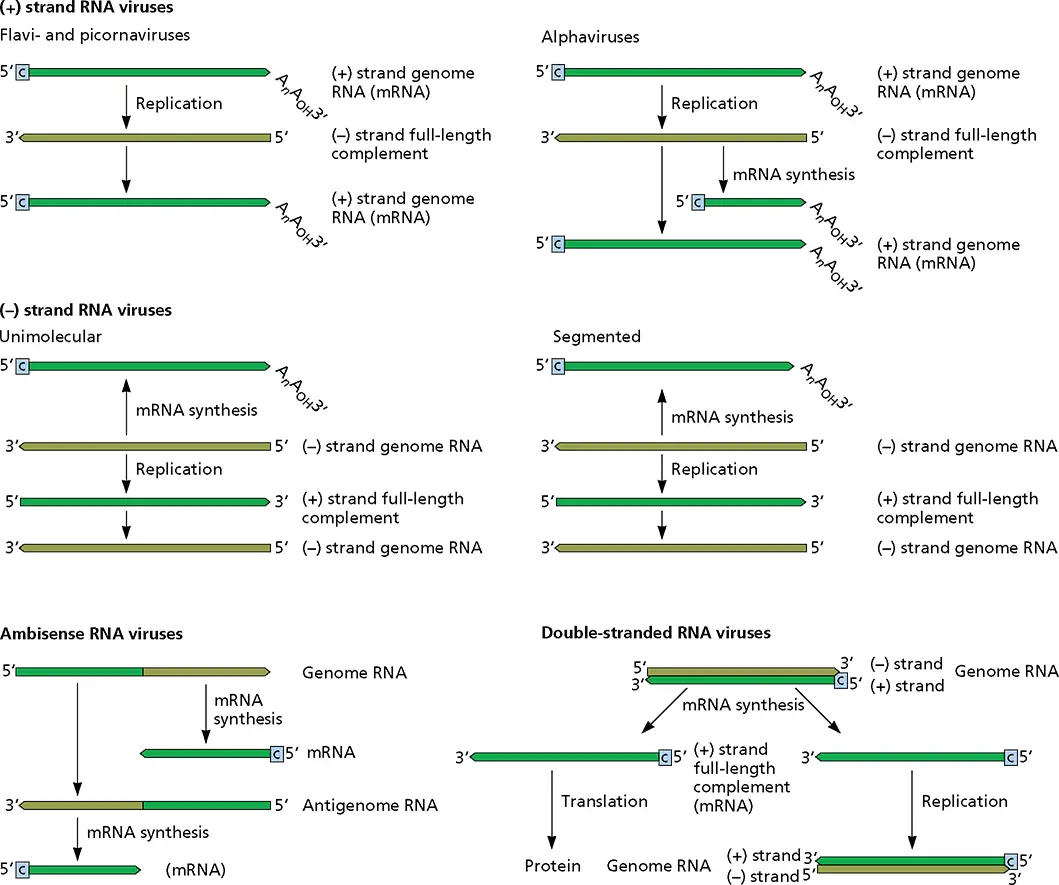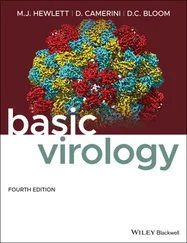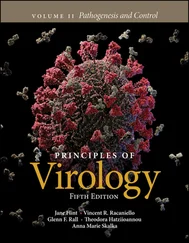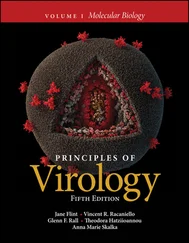Jane Flint - Principles of Virology
Здесь есть возможность читать онлайн «Jane Flint - Principles of Virology» — ознакомительный отрывок электронной книги совершенно бесплатно, а после прочтения отрывка купить полную версию. В некоторых случаях можно слушать аудио, скачать через торрент в формате fb2 и присутствует краткое содержание. Жанр: unrecognised, на английском языке. Описание произведения, (предисловие) а так же отзывы посетителей доступны на портале библиотеки ЛибКат.
- Название:Principles of Virology
- Автор:
- Жанр:
- Год:неизвестен
- ISBN:нет данных
- Рейтинг книги:3 / 5. Голосов: 1
-
Избранное:Добавить в избранное
- Отзывы:
-
Ваша оценка:
- 60
- 1
- 2
- 3
- 4
- 5
Principles of Virology: краткое содержание, описание и аннотация
Предлагаем к чтению аннотацию, описание, краткое содержание или предисловие (зависит от того, что написал сам автор книги «Principles of Virology»). Если вы не нашли необходимую информацию о книге — напишите в комментариях, мы постараемся отыскать её.
Volume I: Molecular Biology
Volume II: Pathogenesis and Control
Principles of Virology, Fifth Edition
Principles of Virology — читать онлайн ознакомительный отрывок
Ниже представлен текст книги, разбитый по страницам. Система сохранения места последней прочитанной страницы, позволяет с удобством читать онлайн бесплатно книгу «Principles of Virology», без необходимости каждый раз заново искать на чём Вы остановились. Поставьте закладку, и сможете в любой момент перейти на страницу, на которой закончили чтение.
Интервал:
Закладка:
The Nature of the RNA Template
Secondary Structures in Viral RNA
RNA molecules are not simple linear chains but can form secondary structures that are important for RNA synthesis, translation, and assembly ( Fig. 6.2). Structural features in RNA are identified by scanning the nucleotide sequence with software designed to fold the nucleic acid into energetically stable structures. Comparative sequence analysis can predict RNA secondary structures. For example, comparison of the RNA sequences of several related viruses might establish that the structure, but not the sequence, of a stem-loop is conserved. Direct evidence for specific RNA structures comes from experiments in which RNAs are treated with enzymes or chemicals that attack single- or double-stranded regions specifically. The results of such analyses can confirm that the predicted stem regions are base paired while loops are unpaired. Structures of RNA hairpins and pseudoknots have been determined by X-ray crystallography or nuclear magnetic resonance ( Fig. 6.2C).
PRINCIPLES Synthesis of RNA from RNA templates
Viral RNA genomes must be copied to provide both genomes for assembly into progeny virus particles and mRNAs for the synthesis of viral proteins.
Viral RNA genomes may be naked in the virus particle [typically (+) strand RNAs] or organized into nucleocapsids in which proteins are bound to the genomic RNAs.
Viral RNA-dependent RNA polymerases, like the other three types of nucleic acid enzymes, resemble a right hand consisting of palm, fingers, and thumb domains, with the active site located in the palm.
Some viral RNA polymerases can initiate RNA synthesis without a primer, while others are primer dependent.
Primers for viral RNA polymerases may be capped fragments of cellular pre-mRNAs or protein-linked nucleotides.
Specificity of viral RNA polymerases for viral RNAs is conferred by the recognition of RNA sequences or structures.
Host cell proteins are required for the activity of viral RNA polymerases.
The single-stranded RNA genome of hepatitis delta virus is copied by host cell DNA-dependent RNA polymerase, an exception to the rule that RNA viruses are copied by RNA-dependent RNA polymerases.
Viral RNA synthesis takes place in specific structures in the cell, either nucleocapsids, subviral particles, or membrane-bound replication complexes.
RNA synthesis is error prone, and this process, together with reassortment and recombination, yields diversity that is required for viral evolution.
BOX 6.1
TERMINOLOGY
What should we call RNA polymerases and the processes they catalyze?
Historically, viral RNA-dependent RNA polymerases were given two different names depending on their activities during infection. The term replicasewas used to describe the enzyme that copies the viral RNA to produce additional genomes, while the enzyme that synthesizes mRNA was called transcriptase. In some cases, this terminology indicates true differences in the enzymes that carry out synthesis of functionally different RNAs, but for other RNA viruses, genomic replication and mRNA synthesis are the samereaction (see the figure). For double-stranded RNA viruses, mRNA synthesis produces templates that can also be used for genomic replication. As these formerly applied terms can therefore be inaccurate and misleading, they are not used here. The name RNA-dependent RNA polymerase (RdRP) will be used in this textbook to describe the enzymes that carry out genome replication and mRNA synthesis from viral RNA templates.

The production of mRNAs from viral RNA templates is often designated transcription. However, this term refers to a specific process, the copying of genetic information carried in DNA into RNA. Consequently, it is not used herein to describe synthesis of the mRNAs of viruses with RNA genomes; this process will be called mRNA synthesis. Similarly, use of the term promoteris reserved to designate sequences controlling transcription of DNA templates.
Naked or Nucleocapsid RNA
The genomes of (−) strand viruses are organized into nucleocapsids in which protein molecules, including the RdRP and accessory proteins, are bound to the genomic RNAs at regular intervals. These tightly wound ribonucleoproteins are very stable and generally resistant to RNase. The RdRPs of (−) strand viruses copy viral RNAs onlywhen they are present in the nucleocapsid, such as that formed by the N protein of vesicular stomatitis virus bound to genomic RNA. In contrast, the genomes of many (+) strand RNA viruses are not coated with proteins in the virus particle [exceptions are the (+) strand RNA genomes of members of the Coronaviridae , Arteriviridae , and Retroviridae ]. This difference is consistent with the fact that mRNAs are produced from the genomes of (−) strand RNA viruses upon cell entry, whereas the genomes of (+) strand RNA viruses are translated directly.
The viral nucleoproteins (NP) are cooperative, single-stranded-RNA-binding proteins, as are the single-stranded nucleic acid-binding proteins required during DNA-directed DNA synthesis. Their function during replication is to keep the RNA single stranded and prevent base pairing between the template and product, so that additional rounds of RNA synthesis can occur. The nucleoproteins of nonsegmented (−) strand RNA viruses have a two-lobe architecture that forms a positively charged groove that binds and shields the genomic RNA ( Fig. 6.3). Interactions between nucleoproteins lock monomers tightly, resulting in rigid NP-RNA assemblies. The NP structures from segmented (−) strand RNA viruses are more varied and display less coordinated contacts between nucleoprotein subunits. These differences may explain why the NP-RNAs of these viruses are more susceptible to RNase digestion than those of nonsegmented (−) strand RNA viruses. The varied structures of the NP-RNA complexes also influence access of the viral RNA polymerase to the template. The RdRP of segmented (−) strand RNA viruses can bind the NP-RNA template directly, whereas those of nonsegmented (−) strand RNA viruses cannot: a phosphoprotein (P) is required to recruit the RdRP to the NP-RNA.
The genomes of many (+) strand RNA viruses encode helicases that serve functions similar to that of the nucleoproteins of (−) strand RNA viruses (see “Unwinding the RNA Template” below). In addition to its enzymatic activity, the poliovirus RdRP (3D pol) is a cooperative single-stranded-RNA-binding protein and can unwind RNA duplexes without the hydrolysis of ATP, as is characteristic of helicase-mediated unwinding.

Figure 6.1 Strategies for replication and mRNA synthesis of RNA virus genomes are shown for representative virus families. Picornaviral genomic RNA is linked to VPg at the 5′ end. The (+) genomic RNA of some flaviviruses does not contain poly(A). Only one RNA segment is shown for segmented (−) strand RNA viruses.
The RNA Synthesis Machinery
Identification of RNA-Dependent RNA Polymerases
The first evidence for a viral RdRP emerged in the early 1960s from studies of mengovirus and poliovirus, both (+) strand RNA viruses. In these experiments, extracts were prepared from virus-infected cells and incubated with the four ribonucleoside triphosphates, one of which was radioactively labeled. The incorporation of nucleoside monophosphate into RNA was then measured. Infection with mengovirus or poliovirus led to the appearance of a cytoplasmic enzyme that could synthesize viral RNA in the presence of actinomycin D, a drug that was known to inhibit cellular DNA-directed RNA synthesis by intercalation into the double-stranded template. Lack of sensitivity to the drug suggested that the enzyme was virus specific and could copy RNA from an RNA template. This enzyme was presumed to be an RdRP. Similar assays later demonstrated that the particles of (−) strand viruses and of double-stranded RNA viruses contain an RdRP that synthesizes mRNAs from the (−) strand RNA present in the particles.
Читать дальшеИнтервал:
Закладка:
Похожие книги на «Principles of Virology»
Представляем Вашему вниманию похожие книги на «Principles of Virology» списком для выбора. Мы отобрали схожую по названию и смыслу литературу в надежде предоставить читателям больше вариантов отыскать новые, интересные, ещё непрочитанные произведения.
Обсуждение, отзывы о книге «Principles of Virology» и просто собственные мнения читателей. Оставьте ваши комментарии, напишите, что Вы думаете о произведении, его смысле или главных героях. Укажите что конкретно понравилось, а что нет, и почему Вы так считаете.











